
Activity Reports
Dougenin Evacuation Centre Closing Ceremony
August 23, 2011
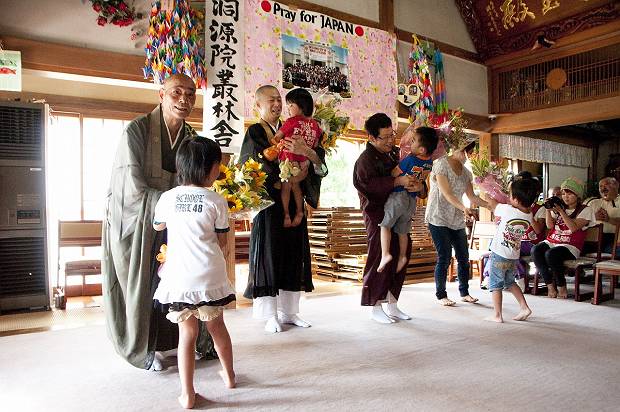
On August 7, the closing ceremony of the Dougenin Temple evacuation center (“Dougenin”) in Ishinomaki was held. Dougenin was established soon after the earthquake and tsunami occurred and has been helping to protect the residents of Ishinomaki ever since. The Dougenin evacuation center taught us the important lesson that in the face of disaster, “Relationships with other people and helping each other can save lives.”
Volunteer coordinator Hirayama Yuuki was invited to and participated in the closing ceremony. He has become quite well-known amongst the people of Ishinomaki and the volunteers.
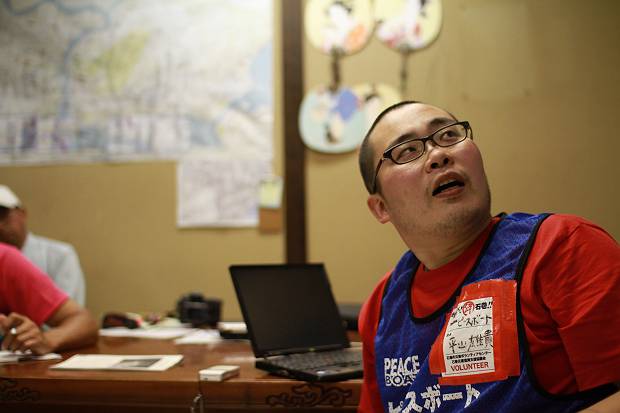
Hirayama first went to Ishinomaki on March 26. It was at a time when there was damage from the disaster to be seen everywhere. Hirayama was part of the group who initially entered the area. They first helped to clear the mud from around Dougenin and then they worked on delivering food and aid supplies.
“At the time, there was so much mud and debris around Dougenin. I went to Dougenin again in May as well but this time it had been cleaned up so much that I almost didn’t recognize it,” commented Hirayama.

Dougenin is a temple with a long and distinguished history. Its surrounding nature is beautiful all year round and changes color with the season. It is located on a hill in the Watanoha region of Ishinomaki. From here, houses and buildings that were destroyed or partially destroyed by the tsunami can be seen in all directions. Immediately following the disaster, the temple master Mr. Onozaki opened up the temple as an evacuation center and it has been home to up to 400 people at times.
Even in Ishinomaki, where amongst the disaster-affected areas construction work is said to be progressing slowly, more and more people have moved into temporary housing and the evacuation centers are closing one by one. Dougenin is one of the evacuation centers that closed. The closing ceremony was attended by many people including adults and children who sought refuge at Dougenin, representatives of volunteer organizations that assisted at the center, as well as representatives of Christian organizations who came from as far away as Sendai. Temple master Mr. Onozaki believes that “Religion doesn’t matter when it comes to people helping each other.”
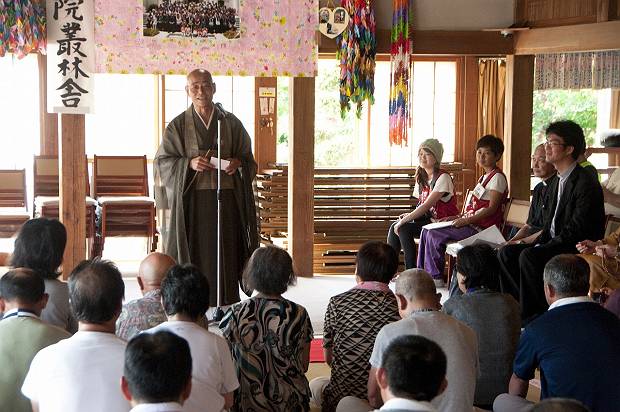
Dougenin has 8 rules for living together:
- Greet each other cheerfully
- Keep shoes tidy and keep living areas clean and tidy
- Always compromise with others. Cooperate with each other and maintain good manners.
- On fine days sit in the sunshine and go for a walk outside.
- Share even small things.
- Help with anything that you can.
- Show respect to Buddhist and Shinto deities and always hold appreciation in your hearts.
- Make necessary rules for everyday life and abide by those rules together.
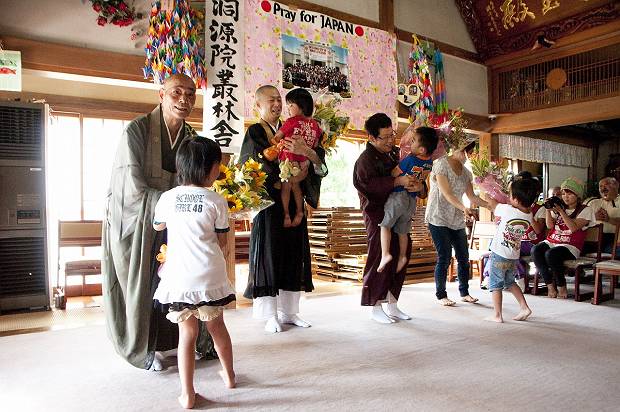
The children who were staying at Dougenin followed these rules closely. Some of them were orphaned after losing their parents in the disaster. Even so, if a younger child is carrying something heavy then one of the older children will help. The children make sure to line up their shoes neatly after taking them off. If there are shoes out of order then they tidy them up. If they see another child all alone then they invite them to come and play together. The children didn’t know each other before but it was natural for them to help each other.
The children at Dougenin are very friendly and they like mischief.
Hirayama was playfully asked which temple he was a priest at, as he did senrei (a cleansing action that one performs upon entering a temple), and his popularity was evident as the children gave him variety of nicknames such as “Kin-chan,” “Miso-pants,” “Hirayama,” “Mega-cockroach,” “Shouichi-kun” and “Kuso-okama-hebi.” After being mobbed by the children who attacked him with kicks and punches, the girls in the group offered warm words of comfort saying “You have to be strong.”
The children of Dougenin are living their lives vigorously.
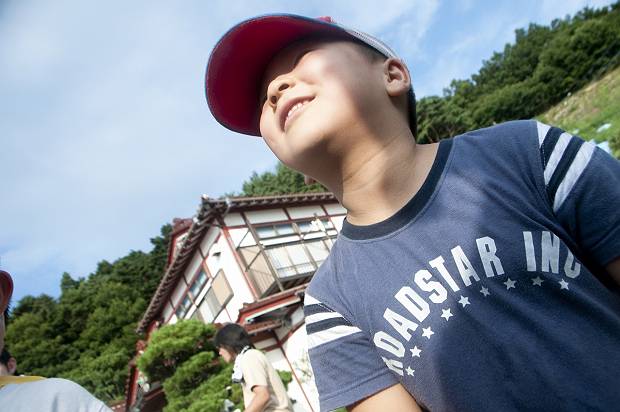
The closing ceremony began with a peaceful atmosphere.
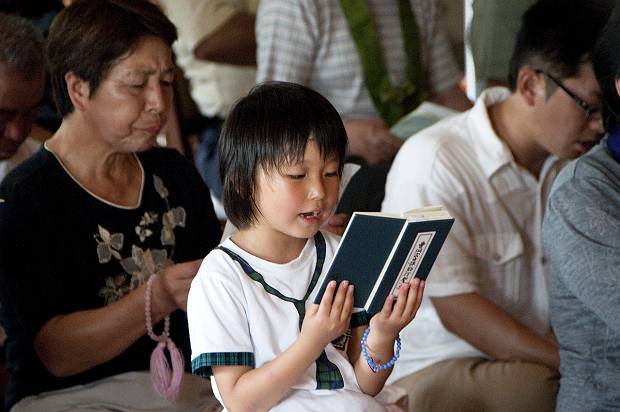
After everyone read aloud a prayer together, local residents expressed words of appreciation. One person said “It feels strange to make such a formal greeting on behalf of all of the evacuation center residents,” and this was met with warm laughter.
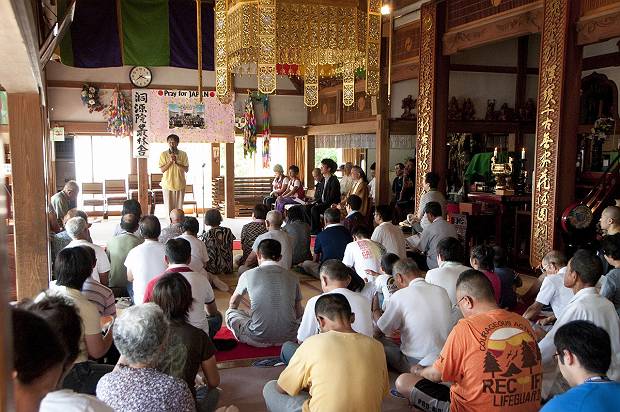
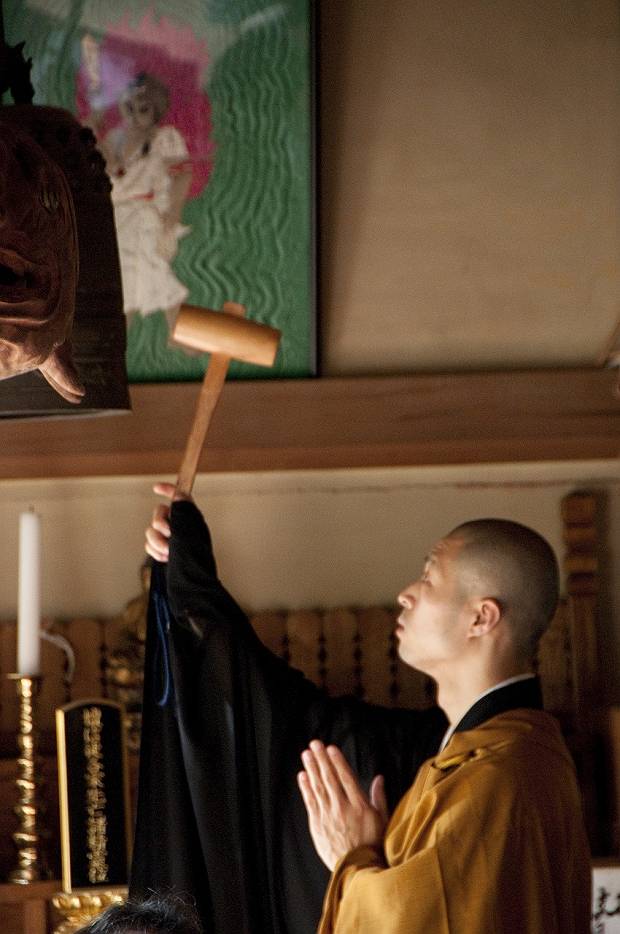
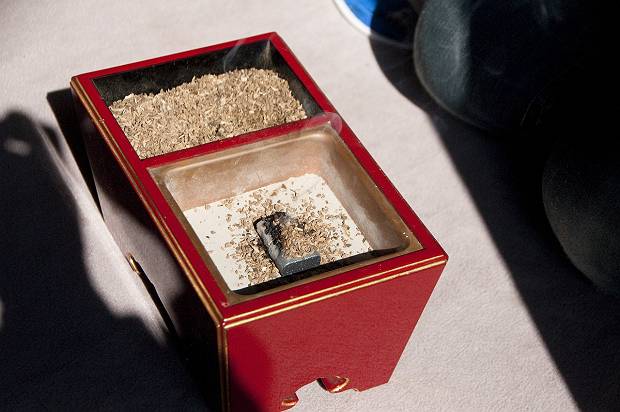
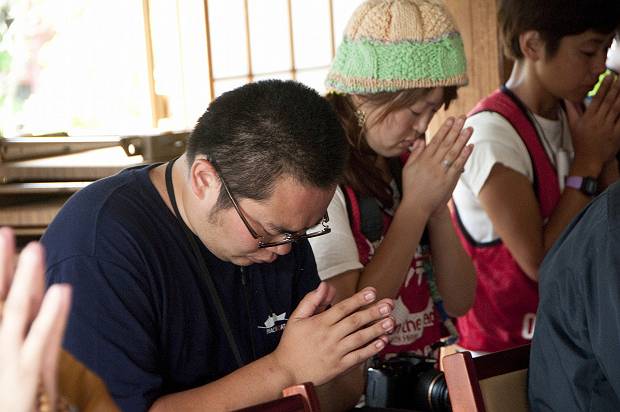
Temple master Mr. Onozaki spoke of the importance of the 8 rules, and said that even if the place that people live changes, that we are always living together with each other.
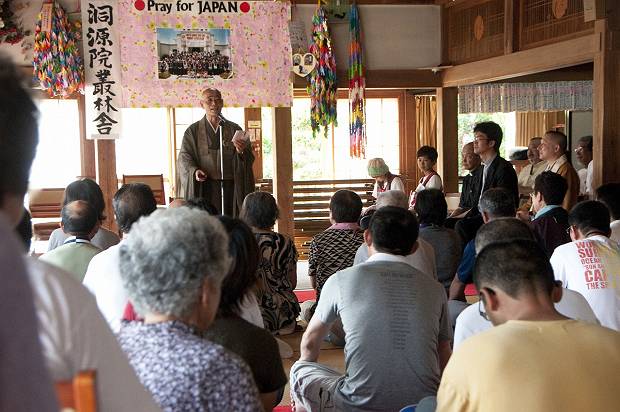
The children gave flowers to the temple master’s wife. She did not let go of the flowers or the microphone, and spoke about when she and her husband first met. She said, “If there was someone in need he would always go and help. That’s what I liked about him.”
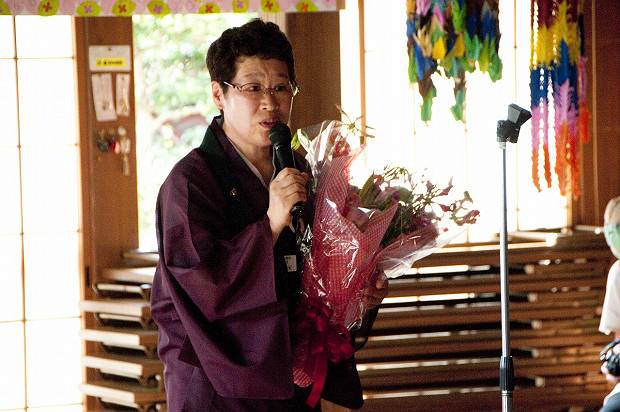
Temple master Mr. Onozaki thinks of the people who were living at the evacuation center as family. When he has time he goes around to visit each person who moved from Dougenin to temporary housing and asks, “Is there anything you need? If you are having any problems then please feel free to come to Dougenin anytime.”
The lesson to be learned from the Dougenin closing ceremony is that people live life through helping each other.
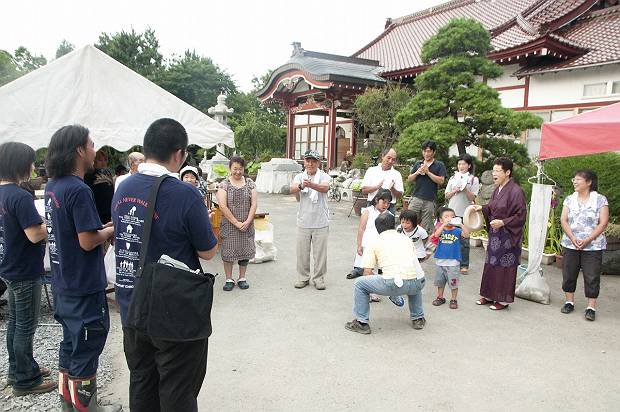
The children gathered around Hirayama who couldn’t hold back his tears when saying goodbye. The song that they sang as they watched people leave was one repeated throughout the closing ceremony, “Magokoro ni Ikiru” (“To live wholeheartedly”).
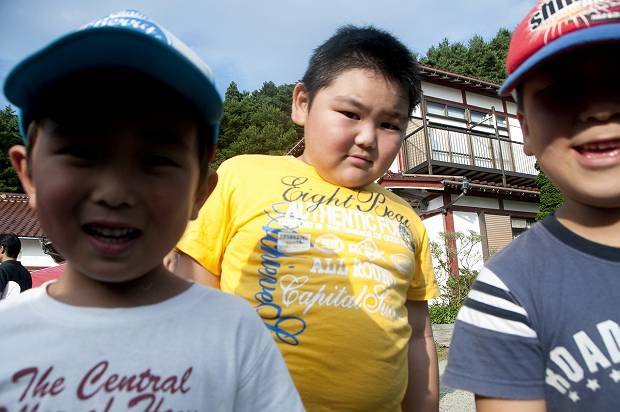
The children of Dougenin are the hope of Ishinomaki.
(Photos: Suzuki Shoichi, Ueno Yoshinori)
TAGS: cleanup • debris removal • Disaster Relief • dougenin • Earthquake • evacuation centre • hirayama • Hirayama Yuuki • Ishinomaki • Japan • Kanto-Tohoku Earthquake and Tsunami • mud removal • Peace Boat • peaceboat • Relief • Tsunami • Volunteer • volunteering • Volunteers


